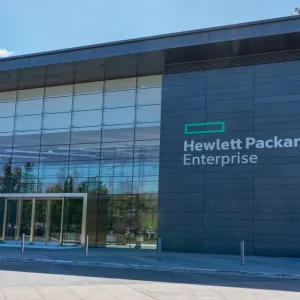The volume and velocity of technological change is shaking companies, industries and entire societies to their core. One recent research report found that two-thirds of business executives believe their organisation is currently being disrupted by information technology and 72 percent agree that they will be disrupted over the next 12 months. At the same time, software has now firmly established itself as the epicentre of differentiation and innovation. It’s a gateway to building new services and developing further revenue streams, seamless customer experiences and expansion into new markets. Quite simply, it’s redefining every industry.
The challenge of aging IT and accelerating business
This wave of change has, however, run into a few obstacles. The first is that IT is fast becoming antiquated, particularly as organisations try to compete in the world of social mobile, analytics, and cloud with applications that were designed for another era. For example, monolithic applications are still widely used across business processes, despite the fact that they are slow to implement and difficult to change. Maintaining this existing system can cost businesses as much as 60 percent of their IT budgets, leaving precious little resources for innovation.
A further issue is that the pace of change is overwhelming to many IT organisations, principally because they are now required to track more technologies than ever before. This is demonstrated most poignantly by research showing that more than 50 billion "things" will be connected to the Internet by 2020. At the same time, business and technology ecosystems are expanding. On the ground, this will radically alter business operations, requiring organisations to increase the amount of devices they connect with and partners and providers that they collaborate with. To manage this change, executives should be exploring the following three application strategies which will provide valuable assistance when shaping their firm’s future and setting the benchmark within their industries.
Three new strategies
The first strategy is called liquid applications and will help companies to avoid complex, lengthy and costly coding of applications by providing a new way to build software. This method enables organisations to assemble applications from reusable components to support dynamic business needs. To ensure that this approach is effective, companies will require modular architectures, next-generation integration techniques and a cloud-first, mobile-first mind-set.
An additional strategy relies on intelligent applications, which embed software intelligence in all of a company’s applications and process. Through this, organisations will be able to manage growing volume, velocity and complexity, and maximise the business value of internal and external data – including that from the physical world.
This new phenomenon of software intelligence is underpinned by the influx of data, processing power and advances in data science such as natural language processing, machine learning and cognitive computing. It is because of these advancements that applications can automate routine tasks, improve business processes through integrated analytics and ultimately govern themselves.
Finally, a business may wish to adopt a connected applications approach to enable software to meet the contemporary needs of businesses. Through opening multiple dimensions of application connectivity with business partner and customer ecosystems — and the Internet of Things — firms will be able to grow revenue and defend market position. What’s more, these types of applications run everywhere — not just on phones, tablets and PCs, but also in manufacturing, pipelines, industrial equipment, cars, wearables and more. Through this, companies will be able to convert products into product-service hybrids.
Success on the horizon
The efficacy of these three new application strategies will require businesses to embrace an entirely new operating model for software development. This will require acceptance that the business of applications is changing how companies operate and grow. No longer a supporting capability, applications are a driver of strategy and competitive differentiation. They can enable entirely new services for new and existing markets.
Both IT and business leaders must understand what it means to be a software-driven business. They need to learn how software can spur growth, shape new markets and reach new customers. In the world of software, being a "fast follower" may not be sufficient to outperform competitors. Only time will tell who is ready to take the lead.






